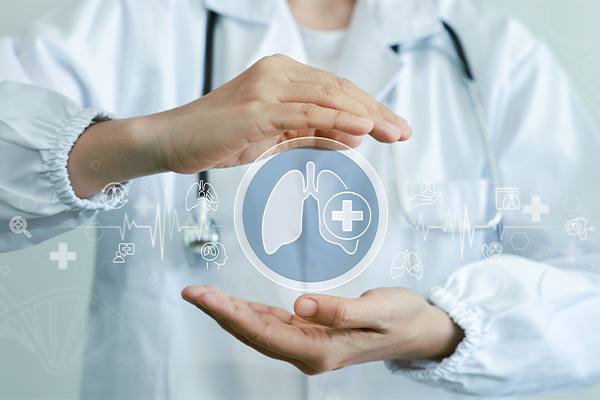
Delhi NCR is one of the most polluted regions in the world. With toxic air containing fine particulate matter (PM2.5 and PM10), vehicle emissions, industrial fumes, construction dust, and seasonal smog, the people living here are highly vulnerable to respiratory diseases. Long-term exposure to such air pollutants can cause or worsen breathing problems, particularly in children, the elderly, and individuals with pre-existing conditions.
Here’s a look at the top 10 respiratory diseases caused or triggered by Delhi NCR’s poor air quality, along with their treatment options and prevention strategies.
Synopsis
Top 10 Respiratory Diseases Caused by Delhi's Poor Air Quality
1. Chronic Obstructive Pulmonary Disease (COPD)
COPD is a persistent and progressive lung disease, including chronic bronchitis and emphysema, that causes obstructed airflow and difficulty breathing.
Delhi’s Impact: Long-term exposure to pollutants like smoke, dust, and chemical fumes worsens COPD.
Symptoms:
-
Shortness of breath
-
Wheezing
-
Recurrent chest infections
Treatment:
-
Bronchodilators & Inhaled corticosteroids
-
Oxygen therapy
-
Pulmonary rehabilitation
-
Lifestyle changes (quitting smoking, avoiding pollutants)

2. Asthma
A chronic condition where airways become inflamed and narrow, often triggered by allergens and air pollutants. The symptoms vary over time and in intensity, together with variable expiratory airflow limitation.
Delhi’s Impact: Air laden with dust, pollen, smoke, and chemical irritants increases asthma attacks.
Symptoms:
-
Coughing
-
Wheezing
-
Chest tightness
-
Breathlessness, especially at night
Treatment:
-
Inhalers (relievers & preventers)
-
Allergy management
-
Air purifiers and masks
-
Avoiding triggers
3. Allergic Rhinitis
An allergic reaction affecting the nasal passages, often triggered by airborne particles.
Delhi’s Impact: High pollen count, vehicle emissions, and construction dust act as triggers.
Symptoms:
-
Sneezing
-
Runny or blocked nose
-
Itchy or watery eyes
-
Postnasal drip
Treatment:
-
Antihistamines
-
Nasal sprays
-
Avoidance of allergens
-
HEPA filters for indoor air
4. Bronchitis
Bronchitis is an Inflammation of the bronchial tubes is often caused by infection or irritants.
Delhi’s Impact: Inhalation of particulate matter and pollutants inflames airways.
Symptoms:
-
Persistent cough with mucus
-
Chest discomfort
-
Fatigue
-
Mild fever
Treatment:
-
Rest and hydration
-
Cough suppressants
-
Bronchodilators (for chronic cases)
-
Avoiding polluted environments
5. Lung Cancer
Lung Cancer is the Uncontrolled growth of abnormal cells in the lungs.
Delhi’s Impact: Tobacco smoking, Air pollution, especially PM2.5, is a major risk factor even among non-smokers.
Symptoms:
-
Persistent cough
-
Blood in sputum
-
Weight loss
Treatment:
-
Surgery, chemotherapy, radiotherapy
-
Targeted drug therapy
-
Early screening in high-risk individuals
6. Interstitial Lung Disease (ILD)
Interstitial Lung Disease are a group of disorders causing scarring (fibrosis) of lung tissue.
Delhi’s Impact: Polluted air and toxins worsen existing lung damage. Exposure to pigeon droppings
Symptoms:
-
Breathlessness on exertion
-
Dry cough
-
Chest tightness
Treatment:
-
Anti-fibrotic medications
-
Oxygen therapy
-
Avoidance of environmental triggers
7. Pneumonia
Pneumonia is an Infection that inflames the air sacs in one or both lungs.
Delhi’s Impact: Air pollution weakens respiratory immunity, increasing vulnerability to infections like viral, bacterial, or fungal.
Symptoms:
-
Fever
-
Productive cough
-
Chills
-
Breathing difficulty
Treatment:
-
Antibiotics/antivirals (based on cause)
-
Hospitalisation in severe cases
-
Vaccination for prevention
8. Tuberculosis (TB)
Tuberculosis is a bacterial infection that primarily affects the lungs.
Delhi’s Impact: Pollution weakens lung defences and worsens outcomes in TB patients. Overcrowding facilitates the transmission of infection from one to another
Symptoms:
-
Chronic cough
-
Weight loss
-
Fever and night sweats
-
Coughing up blood
Treatment:
-
Long-term antibiotics (6 months or more)
-
DOTS therapy (directly observed treatment)
-
Nutrition and rest
9. Sinusitis
Sinusitis is an Inflammation of the sinuses due to infection or irritants.
Delhi’s Impact: Exposure to smog and allergens leads to chronic sinus problems.
Symptoms:
-
Facial pain
-
Blocked nose
-
Headache
-
Loss of smell
Treatment:
-
Steam inhalation
-
Saline nasal sprays
-
Decongestants and antibiotics (if bacterial)
10. Acute Respiratory Distress Syndrome (ARDS)
Acute Respiratory Distress Syndrome is a life-threatening condition where fluid builds up in the lungs.
Delhi’s Impact: Severe respiratory infections and exposure to pollutants (high concentration or for a long period) can trigger ARDS.
Symptoms:
-
Rapid breathing
-
Severe breathlessness
-
Low oxygen levels
-
Confusion
Treatment:
-
ICU care with ventilator support
-
Treating underlying cause
-
Lung-protective strategies
Protecting Yourself from Delhi NCR’s Toxic Air
Given the intensity of pollution, especially in winter, it's essential to take preventive measures:
Prevention Tips:
-
Wear N95/N99 masks when outdoors
-
Use air purifiers indoors
-
Avoid morning walks when pollution peaks
-
Close windows during high pollution alerts
-
Get annual flu and pneumonia vaccines
-
Stay hydrated and maintain a healthy diet
When to See a Doctor
If you experience a persistent cough, breathlessness, or chest pain, consult a pulmonologist immediately. Early diagnosis and treatment can prevent complications and improve quality of life. Major hospitals in Delhi NCR, like Manipal Hospital, offer specialised respiratory care and diagnostic facilities.
Conclusion
Delhi NCR’s air pollution is more than just a seasonal nuisance—it’s a year-round public health emergency. Being aware of the most common respiratory illnesses, their symptoms, and treatments can help you act early and protect your health. While policy changes and environmental reforms are essential for long-term solutions, individual care and awareness remain crucial.
FAQ's
Asthma, bronchitis, COPD, pneumonia, and lung cancer are prevalent due to pollution.
Many are manageable with timely intervention, especially under expert care from Manipal Hospital Delhi.
Yes, children are highly susceptible due to developing lungs and immune systems. The elderly are also high-risk population vulnerable to air pollution.
Through advanced diagnostics, long-term management plans, rehabilitation, and patient education.
If you have a persistent cough, wheezing, or shortness of breath for more than a week, seek expert help.






















 5 Min Read
5 Min Read



.png)









